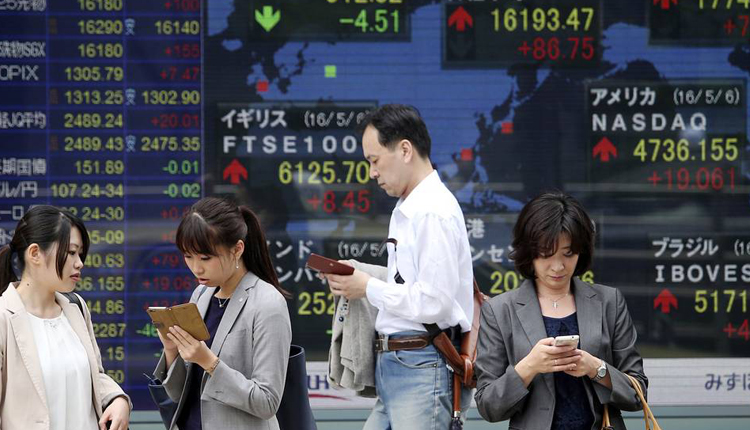Asian stocks rose Monday afternoon as investors reacted to a series of recent data releases in major economies including the United States and China.
Mainland Chinese stocks rose by the afternoon, with the Shanghai composite adding 0.36 percent and Shenzhen component up 1.01 percent. The Shenzhen composite also gained 1.05 percent.
Hong Kong’s Hang Seng index, on the other hand, slipped fractionally following another weekend of protests in the embattled city.
In Japan, the Nikkei 225 rose 0.51 percent in afternoon trade while the Topix index added 0.74 percent. Shares of Japanese automaker Nissan slipped more than 0.3 percent following reports that company Chief Executive Hiroto Saikawa has expressed his desire to resign, following an admission last week to being improperly compensated.
Japan’s economy grew an annualized 1.3 percent in the April to June quarter, according to revised data from the Cabinet Office on Monday. That was lower than the initial estimate of a 1.8 percent expansion, but matched market expectations.
In South Korea, the Kospi added 0.61 percent, with shares of chipmaker SK Hynix jumping more than 2 percent. Australia’s S&P/ASX 200 gained fractionally by 0.04 percent.
Overall, the MSCI Asia ex-Japan index traded 0.15 percent higher.
China’s economic worries
Chinese customs data showed the country’s exports unexpectedly fell in August, pointing to further weakness in the world’s second-largest economy. August exports fell 1 percent on-year, customs data showed Sunday, while analysts had predicted a 2 percent rise according to a Reuters poll.
Shipments from China to the United States slowed sharply as the countries are engaged in a protracted trade fight. Beijing and Washington have levied tariffs on billions of dollars worth of each other’s goods, which, analysts say, is affecting global growth. More U.S. tariffs are set to take place on October 1 and December 15.
“Looking ahead, we expect China’s export outlook to remain gloomy,” Louis Kuijs, head of Asia economics at Oxford Economics, wrote in a Sunday note. “The additional tariffs imposed by the US on 1 September and those scheduled for October 1 will further dampen export growth momentum.”
The data miss now raises expectations that Beijing may introduce more stimulus measures to prop up its economy.
“In our view, more significant steps are needed if policymakers want to stabilize growth next year at around 5.7 percent, which we think they do. In this setting we expect more visible improvements in imports further down the road,” Kuijs said.
The People’s Bank of China (PBOC) announced Friday that it was cutting the amount of funds that lenders need to hold in reserve. The Chinese central bank said the reserve requirement ratio would be cut by 50 basis points and it would further reduce that ratio by 100 basis points for some qualified banks.
One analyst told CNBC he was a little unhappy with the move.
“To me, that’s a sign of panic at the PBOC,” Andrew Collier, managing director at Orient Capital Research, told CNBC’s “Street Signs” on Monday. “Clearly, they feel like the tax cuts aren’t doing enough to generate economic growth and so … now they’re resorting to the monetary stimulus.”
Collier said past data showed the record of banks is “not so good” when money was given to them.
“To a great extent, (banks) tend to give it (to) local governments, state-owned firms or the famous local government financing vehicles, which is squandering money,” he said.
Meanwhile, the U.S. nonfarm payrolls report released Friday fell short of expectations, with the figure increasing by just 130,000 in August.
That was short of Wall Street estimates for a 150,000 rise. Still, wage growth remained solid, with average hourly earnings increasing by 0.4 percent for the month and 3.2 percent over the year; both numbers were one-tenth of a percentage point better than expected.
Currencies and oil
The U.S. dollar index, which tracks the greenback against a basket of its peers, was at 98.423 after falling from levels above 99.2 last week.
The Japanese yen traded at 106.90 against the dollar after weakening from levels below 106.0 in the previous week. Elsewhere, the Australian dollar changed hands at $0.6857 following its rise from levels below $0.672 last week.
Oil prices rose in the afternoon of Asian trading hours, with international benchmark Brent crude futures adding 0.81 percent to $62.04 per barrel and U.S. crude futures advancing 0.97 percent to $57.07 per barrel.
Source: CNBC


